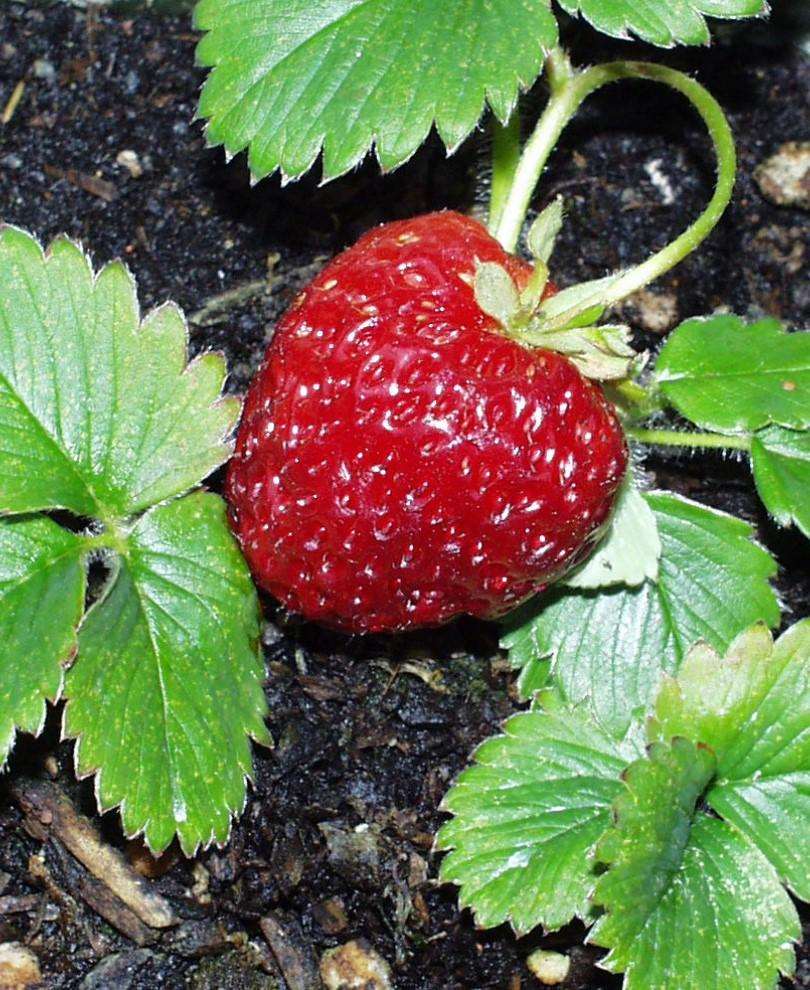| USDA Zone: 5-9 Grow Height: 1' or smaller (Groundcover) Sun: Full Sun Ripening Time: June - October
Pollination: Self Fertile Origin The variety was discovered by Marshall F. Ewell of Massachusetts in 1890 and flourished in the Pacific Northwest throughout the early part of the 20th century, where it was an important crop in the region's berry industry. Famous food connoisseur James Beard called Marshall the most delicious strawberry ever grown. Discovered in Massachusetts before 1900, it was grown commercially in the Pacific Northwest until the 1960's. Characteristics The Marshall strawberry is a midseason variety. It has relatively large leaves and large, deep red fruit with soft flesh. While drought tolerant, as noted above it has a high susceptibility to the crinkle virus. Contemporary status The Marshall Strawberry is currently being maintained at the USDA National Clonal Germplasm Repository in Corvallis, Oregon, and by very few private growers. Renewing America's Food Traditions, a coalition of sustainable agriculture organizations, has listed the Marshall strawberry as one of "700 plant and animal foods at risk of extinction". | 